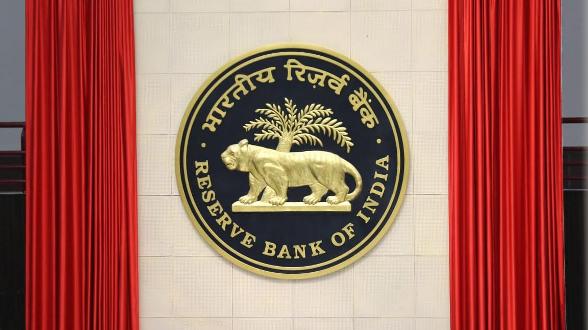Critically Endangered Species In India UPSC | Explained : Critically Endangered Species list is released by IUCN which contains Critically Endangered Species in India. Lets See in brief about IUCN first.
Critically Endangered Species In India
About IUCN
- Established in 1948
- The IUCN is an international organization working in the field of nature conservation and sustainable use of natural resources.
- It has an observer and consultative status at the United Nations.
- It is best known for compiling and publishing the IUCN Red List, which assesses the conservation status of species worldwide.
There are 9 categories in the Red List of Threatened Species:
- Extinct
- Extinct in the Wild
- Critically Endangered
- Endangered
- Vulnerable
- Near Threatened
- Least Concern
- Data Deficient and
- Not Evaluated.
- Critically Endangered (CR),
- Endangered (EN)
- Vulnerable (VU) species
Among the categories Following are considered to be threatened with extinction.

Critically Endangered Species In India 2021
| Category | Details |
| Extinct (EX) |
|
| Extinct in the Wild (EW) |
|
| Critically Endangered (CR) |
|
| Endangered (EN) |
|
| Vulnerable (VU) |
|
| Near Threatened (NT) |
|
| Least Concern (LC) |
|
| Data Deficient (DD) |
|
| Not Evaluated (NE) |
|
Critically Endangered Animal Species of India :
Critically Endangered Animal Species of India
The Critically Endangered list includes
- 10 mammals
- 15 birds
- 6 reptiles
- 19 species of amphibians
- 14 fishes
Critically Endangered Mammals :
- Namdapha Flying Squirrel (Biswamoyopterus biswasi)
- Malabar Civet (Viverra civettina)
- Sumatran Rhinoceros (Dicerorhinus sumatrensis)
- Javan Rhinoceros (Rhinoceros sondaicus)
- Jenkin’s Andaman Spiny Shrew (Crocidura jenkinsi)
- Nicobar White-tailed Shrew (Crocidura nicobarica)
- Kondana Rat (Millardia kondana)
- Large Rock Rat or Elvira Rat (Cremnomys elvira)
- Pygmy Hog (Porcula salvania).
- Andaman White-toothed Shrew (Crocidura andamanensis)
Critically Endangered Reptiles :
- Gharial (Gavialis gangeticus)
- Hawksbill Turtle (Eretmochelys imbricata)
- Leatherback Turtle (Dermochelys coriacea)
- Four-toed River Terrapin or River Terrapin (Batagur baska)
- Red-crowned Roofed Turtle or the Bengal Roof Turtle (Batagur kachuga)
- Sispara day gecko (Cnemaspis sisparensis)
Critically Endangered Amphibians :
- Anamalai Flying Frog (Rhacophorus pseudomalabaricus)
- Gundia Indian Frog (Indirana gundia)
- Kerala Indian Frog (Indirana phrynoderma)
- Charles Darwin’s Frog (Ingerana charlesdarwini)
- Kottigehara Bubble-nest Frog (Micrixalus kottigeharensis)
- Amboli Bush Frog (Pseudophilautus amboli)
- Chalazodes Bubble-Nest Frog (Raorchestes chalazodes)
- Small Bush Frog (Raorchestes chotta)
- Green-eyed Bush Frog (Raorchestes chlorosomma)
- Griet Bush Frog (Raorchestes griet)
- Kaikatt’s Bush Frog (Raorchestes kaikatti)
- Mark’s Bush Frog (Raorchestes marki)
- Munnar Bush Frog (Raorchestes munnarensis)
- Large Ponmudi Bush Frog (Raorchestes ponmudi)
- Resplendent Shrub Frog (Raorchestes resplendens)
- Sacred Grove Bush frog (Raorchestes sanctisilvaticus)
- Sushil’s Bush Frog (Raorchestes sushili)
- Shillong Bubble-nest Frog (Raorchestes shillongensis)
- Tiger toad (Xanthophryne tigerinus)
Critically Endangered Fishes
- Pondicherry Shark (Carcharhinus hemiodon)
- Ganges Shark (Glyphis gangeticus)
- Knife-tooth Sawfish (Anoxypristis cuspidata)
- Large-tooth Sawfish (Pristis microdon)
- Long-comb Sawfish or Narrow-snout Sawfish (Pristis zijsron)
Critically Endangered Corals
- Fire corals (Millepora boschmai)
Critically Endangered Spiders
- Rameshwaram Ornamental or Rameshwaram Parachute Spider (Poecilotheria hanumavilasumica)
- Gooty Tarantula, Metallic Tarantula or Peacock Tarantula (Poecilotheria metallica
Endangered Birds in India : As On June 2021
- On June 10, 2021, Union Minister for Environment and Forests Dr. M.Veerappa Moily, in a written reply in Rajya Sabha, gave details of Critically Endangered Species of Birds in India.
- He stated– According to International Union for Conservation of Nature (IUCN) red list of birds, the information contained in the IUCN Red list version 2013.2 indicates that 15 species of birds from India are critically endangered.
| Critically Endangered Birds Common Name |
|---|
| Baer’s Pochard |
| Forest Owlet |
| Great Indian Bustard |
| Bengal Florican |
| Siberian Crane |
| Spoon-billed Sandpiper |
| Sociable Lapwing |
| Jerdon’s Courser |
| White backed Vulture |
| Red-headed Vulture |
| White-bellied Heron |
| Slender-billed Vulture |
| Indian Vulture |
| Himalavan Quail |
| Pink-headed Duck |
Why are Birds Endangered ?
The primary reasons for the decline in the population of birds are:
- Loss, modification, fragmentation, and degradation of habitat,
- Environmental contaminants,
- Poaching,
- Land-use changes, particularly the conversion of large areas to intensive crop cultivation,
- Changes in cropping pattern due to numerous reasons, including
- Implementation of irrigation schemes,
- Increased pesticide usage and livestock grazing,
- High levels of disturbance,
- Developmental activities like mining and hydel projects.
- Threats posed by infrastructure development, such as
- Collisions with vehicles,
- Power-lines and wind turbines
Critically Endangered Species In India : Species In News
| Species In News For UPSC 2021-22
Prelims Radar 2021 : Species In News |









